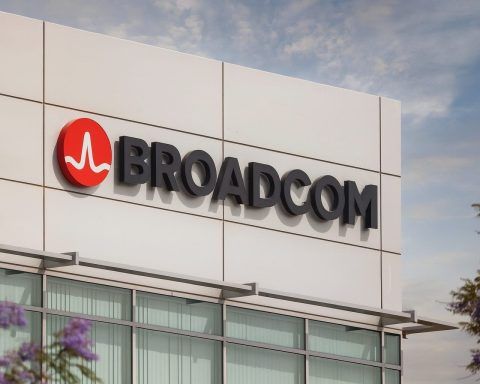- Fund Flow Shift: Vanguard’s S&P 500 ETF (VOO) saw about $1.02 billion in net outflows over the past week [1], even as the fund rose ~0.85% in value. In contrast, the Vanguard Total Stock Market ETF (VTI) had roughly $1.03 billion in net inflows during the same 5-day span [2], gaining 0.88% for the week.
- Both Funds Near Highs: Despite the divergence in flows, both ETFs are up ~15% year-to-date, benefiting from 2025’s broad market rally [3]. VOO trades around $615–620 per share while VTI is about $330 per share as of Oct. 10, reflecting the S&P 500’s ~15% gain in 2025 [4]. Major U.S. indexes hit record levels in early October amid optimism that the Federal Reserve will ease policy [5].
- Investor Preference & Costs: Analysts attribute the trend to intensifying competition and cost-conscious investing. State Street’s SPY (another S&P 500 ETF) has bled a record $32.7 billion in outflows in 2025, as investors shift to cheaper alternatives. Vanguard’s VOO and BlackRock’s IVV (iShares Core S&P 500) have attracted billions thanks to ultra-low 0.03% expense ratios (versus SPY’s 0.0945%) [6]. This “growing preference for lower-cost options” is reshaping the ETF landscape [7].
- VTI’s Broad Appeal: The Vanguard Total Stock Market ETF now boasts over $2 trillion in assets, recently becoming the first-ever ETF to cross that milestone [8]. VTI holds 3,500+ U.S. stocks across large, mid, and small caps, essentially the entire market. Investors get this broad exposure for the same 0.03% fee as VOO [9]. By covering the “other 20%” of stocks beyond the S&P 500, VTI offers diversification into smaller companies not in the 500 index [10].
- Top Holdings Drive Performance: Mega-cap tech stocks – which dominate both VOO and VTI – continue to power returns. Nvidia (a top holding) has surged ~40% YTD on its aggressive push into AI (including a $100B investment in OpenAI) [11]. Microsoft and Apple likewise remain robust: Microsoft’s cloud and clean energy initiatives have analysts echoing a “Strong Buy” outlook [12], and Apple’s iPhone 17 sales are strong (though analyst opinions are mixed, with a “Moderate Buy” consensus) [13]. These tech giants’ strength has underpinned both ETFs’ gains, even as some investors rotate toward broader market exposure.
Vanguard ETFs See Opposite Fund Flows Amid Market Rally
Investors are making a notable allocation shift between Vanguard’s two flagship equity funds. Over the first week of October, VOO – Vanguard’s S&P 500 Index ETF – experienced significant net withdrawals of just over $1 billion [14]. Yet VTI – Vanguard’s Total Stock Market ETF – simultaneously enjoyed roughly $1 billion of net new money [15]. This is striking because both funds posted modest gains for the week (under 1%), reflecting a rising market rather than any performance shortfall [16] [17]. In other words, investors pulled cash from VOO even as its price inched higher, and poured cash into VTI as it too climbed.
This divergence comes as U.S. stocks trade near all-time highs. In early October, the S&P 500 briefly hit intraday records around 6,731 points [18]. The broader market strength – fueled by optimism for potential Fed rate cuts after some soft economic data [19] – has lifted both ETFs about 15% year-to-date. The S&P 500 is up ~15% in 2025 [20], and VTI’s total market index has closely tracked that gain. As of October 10, VOO’s market price is around $615–620, while VTI trades near $330 per share, both reflecting those robust YTD returns. The fact that money is moving despite strong performance suggests the flows are not about short-term returns, but rather investor strategy and preferences.
Cost appears to be a driving factor. Vanguard’s and BlackRock’s S&P 500 funds have been stealing share from State Street’s SPY, the original S&P 500 ETF, throughout 2025. SPY carries a higher 0.09% fee, and in 2025 it has seen an unprecedented $32.7 billion in outflows – the largest in ETF history. Meanwhile, Vanguard’s VOO has led all ETFs with $80+ billion of inflows year-to-date, topping industry rankings [21] [22]. (VOO and its mutual fund share class combined manage well over $1 trillion in S&P 500 assets.) Investors are clearly voting with their feet for ultra-low fees. As one analysis notes, “Rival funds from Vanguard and BlackRock have surged ahead, attracting billions thanks to 0.03% expense ratios”, versus SPY’s higher cost [23]. This shift underscores a broad trend: “growing preference for lower-cost options” among investors [24].
Another motive is portfolio positioning. VOO tracks just the S&P’s 500 large-cap stocks, whereas VTI holds virtually the entire U.S. equity market – over 3,600 companies including mid-caps, small-caps, and micro-caps [25] [26]. Both funds charge identical rock-bottom fees (0.03%), so investors can get far broader exposure through VTI without paying more [27]. In 2023 and 2024, mega-cap tech stocks led the market, making an S&P 500 fund like VOO sufficient for many. But 2025’s rally has broadened somewhat – since a spring rebound, smaller stocks have slightly outpaced big ones (small-cap indexes +34% vs. +30% for large-caps) [28]. This may have prompted some investors to rebalance into “the other 20%” of the market that VOO leaves out [29]. Notably, VTI’s net inflows suggest confidence in a wider market upswing, not just the familiar FAANG-sized names.
Tech Titans Powering Both ETFs
Despite their differences, VOO and VTI share one crucial trait: their top holdings are the same tech titans. The S&P 500’s largest stocks – Apple, Microsoft, Nvidia, Amazon, Google, etc. – also dominate VTI’s portfolio (albeit at slightly lower weightings). Recent news from these giants has been a major tailwind for both funds’ performance, even if investors are reallocating between the two.
For example, consider Nvidia (NVDA), a top-five holding in both ETFs. The semiconductor juggernaut has become a market darling thanks to the artificial intelligence boom. Nvidia’s stock has soared ~40% year-to-date, fueled by blockbuster moves like a $100 billion investment in OpenAI (maker of ChatGPT) and a new partnership with Fujitsu on AI robotics [30]. Wall Street is extremely bullish – analysts maintain a “Strong Buy” consensus on NVDA [31] – reflecting confidence that Nvidia will keep driving the AI revolution (and, by extension, index returns).
Microsoft (MSFT), another cornerstone holding (second-largest in VTI and VOO), is likewise showcasing strength. The tech giant’s expansion into cloud gaming and clean energy has impressed investors. Microsoft is testing a free, ad-supported Xbox Cloud Gaming service to reach more users, and it just inked a 100-megawatt solar power purchase in Japan as part of its sustainability push [32]. Its financials remain solid (Azure cloud growth, etc.), and analysts also rate the stock a “Strong Buy” [33]. Such optimism around Microsoft’s future in both tech and green initiatives helps sustain inflows into funds that hold it.
Even Apple (AAPL), the largest U.S. stock, has given investors reasons to stay invested – though with a bit more caution. Apple’s new iPhone 17 is seeing strong consumer demand, aided by a recent price cut on the base model [34]. This has alleviated some worries about Apple’s growth cycle. Still, analysts’ views on Apple are split: many are bullish (pointing to Apple’s high-margin services business and loyal ecosystem), but some have downgraded the stock, warning that lofty expectations for future iPhones and potential China-related headwinds could limit upside [35]. The consensus rating has slipped to a “Moderate Buy,” suggesting Apple might be fairly valued after its big run [36]. In short, Apple remains a cash-generating cornerstone, but not an undisputed market darling at this moment.
These three companies – Nvidia, Microsoft, and Apple – together account for roughly 20% of the S&P 500’s value [37], and similarly hefty portions of VTI. Their fortunes greatly influence both ETFs’ performance. The recent fund flow shift (VOO outflows vs. VTI inflows) is not a bet against these tech giants – investors in VTI still own them – but rather a bet in addition to them, extending to thousands of smaller stocks as well. As long as “The Ten Titans” (NVDA, MSFT, AAPL, and other mega-caps) keep climbing, VOO and VTI holders alike will benefit immensely [38] [39]. But the appeal of VTI is that it also captures the rally in the other3,000+ stocks that lie outside the top S&P names.
Notably, overall market sentiment remains positive on Big Tech but is inching off extremes. The CNN Fear & Greed Index, which hit “Greed” levels during the S&P’s seven-day winning streak in late September, has eased back to neutral territory by mid-October as that streak broke. And while the government shutdown saga and tariff skirmishes made headlines, they have barely dented market optimism so far. Wall Street appears “blissfully ignorant” of the D.C. drama’s impact for now, focusing instead on cooling inflation and future Fed moves [40]. This optimism toward macro conditions has helped prop up tech stocks and by extension the index ETFs.
Why Investors Are Rotating: Costs, Coverage & Confidence
So why would investors yank money out of an S&P 500 fund at all when the market is hitting records? Industry experts point to a few key factors:
- Costs and Competition: The fee war among ETF providers has reached its logical conclusion – investors can now get the entire U.S. stock market for essentially zero cost. Vanguard and others have driven expense ratios to rock-bottom, and cost-sensitive investors are consolidating into the cheapest funds. According to the Financial Times, SPY’s outflows (over $32B this year) highlight how cost-conscious retail money is “permanently redefining the balance of power on Wall Street.” Analysts note that retail investors increasingly favor low-cost index products, forcing even institutional players to follow [41]. VTI and VOO each charge just 0.03%,versus SPY’s 0.09% [42]. For large holders, that difference is meaningful – and many have decided it’s no longer worth paying extra for SPY. As a result, VOO has absorbed tens of billions from defecting SPY investors in 2025 [43] [44]. The recent weekly outflow from VOO could simply reflect profit-taking or rebalancing by some of those same investors after a strong run, rather than an indictment of the fund itself. In fact, VOO still has net inflows year-to-date; it’s just that in early October some of that hot money rotated into VTI or elsewhere for diversification.
- Total Market Diversification: VTI’s appeal lies in its broader market coverage. By owning virtually every U.S. stock, VTI offers exposure to segments that the S&P 500 omits – mid-cap and small-cap companies, and even micro-caps [45] [46]. During periods when smaller stocks rally or recover, VTI will capture that upside while a pure S&P 500 fund might miss it. We’ve seen hints of this in 2025: after a tough 2022–23 for small-caps, many bounced back strongly. One report noted that in 2021’s reopening boom, small- and mid-cap stocks actually outperformed large-caps, giving VTI a slight edge that year [47]. And more recently, since this April, the Russell 2000 (small caps) outgained the S&P 500 (large caps) 34% to 30% [48] as investors bought beaten-down smaller names. If an investor believes the market rally is broadening – or worries that the S&P 500’s mega-cap leaders could take a breather – moving some funds from VOO to VTI is a logical step. It increases exposure to any “catch-up” rally in smaller stocks. Essentially, VTI provides greater balance: it still heavily weights the Apples and Microsofts (so you’re not missing out on Big Tech), but it also holds thousands of other companies that might shine in different economic conditions.
- Investor Confidence vs. Caution: Paradoxically, the shift into VTI could signal both optimism and prudence. On one hand, it shows confidence in the overall market – investors wouldn’t be adding money to VTI if they expected a market crash, since VTI is as “all-in” on equities as it gets. In fact, heavy equity ETF inflows are a sign that investors remain bullish on U.S. stocks despite recession talk [49] [50]. (As ETF.com put it, Vanguard buyers in 2025 are “not panicking; they’re planning” for long-term growth [51] [52].) On the other hand, swapping some money into a broader fund can be seen as a risk management move – an acknowledgement that the next phase of the market might not be led solely by the S&P 500 giants. By holding VTI, investors hedge their bets: if market leadership broadens to smaller firms, they’re covered; if large-cap tech keeps dominating, they still have big exposure via VTI’s top holdings. In short, it’s a balanced way to stay in the market rally while preparing for potential shifts under the surface.
Outlook: Will Broad Market Strength Continue?
Looking ahead, the key question is whether this nascent rotation will pay off. Will mid- and small-cap stocks continue to outperform, or will mega-caps resume full leadership? Experts are divided, but many suggest maintaining exposure to both segments – precisely what VTI offers.
Historically, large-caps have outpaced smaller stocks over the past decade, thanks in large part to the extraordinary run of tech behemoths [53]. Indeed, through early October 2025, VOO’s 10-year annualized return (about 15.1%) edges out VTI’s (around 14.5%) [54]. That gap is a result of the S&P 500’s tech-heavy tilt during a tech-driven era. However, this trend “is not immutable” [55]. Over very long periods (multiple decades), small-cap equities have often delivered higher returns than large-caps, albeit with more volatility [56]. If the economic cycle shifts to favor smaller businesses – for example, if interest rates begin to fall, credit conditions ease, or domestic growth outpaces the global giants – we could see a prolonged run where mid and small companies excel. In that scenario, VTI would likely outperform VOO, and we might continue to see investors favoring total-market funds.
Many market watchers are actually optimistic that the rally has room to broaden. With inflation moderating and the Fed potentially nearing the end of its tightening cycle, some strategists expect a “soft landing” environment that lifts more than just the Big Tech boats. Fed officials have signaled possible rate cuts in 2024, and futures markets are pricing in a couple of rate reductions by next year [57] [58]. That prospect tends to boost equities across the board. One technical model even projects that a leveraged S&P fund (SPUU) could rally ~25% in the next 3 months if current momentum holds [59] – implying the regular S&P 500 might climb another ~12%. If such bullish forecasts prove true, equity inflows should persist, and funds like VOO and VTI would both ride the wave higher (with VTI capturing the full market’s rise).
On the flip side, there are voices of caution noting that the market’s leadership remains narrow. Goldman Sachs CEO David Solomon warned in early October that after such a steep tech-led run-up, a market “selloff in the next 12 to 24 months” wouldn’t be surprising [60]. History shows that surges like the one we’ve seen often encounter corrections. DataTrek Research observed that since 2023, rallies similar to the current one were followed by pullbacks of 5–18%within months [61]. If a correction hits, the distinction between VOO and VTI might matter less in the short term – both would decline if the whole market falls out of risk-on mode. But even in a downturn, diversification can help. VTI’s broader base could cushion against idiosyncratic shocks (for instance, if a few mega-caps stumble badly, their impact on VTI is slightly diluted by the thousands of smaller holdings).
Bottom line: The recent fund flow shifts suggest that investors are positioning for a more inclusive bull market – one not solely reliant on the tech mega-caps that rule the S&P 500. “Continued faith in passive investing and long-term growth” underpins these flows, as one report noted, with VOO and VTI serving as core holdings for many individuals [62] [63]. Vanguard’s Total Stock Market ETF, now a $2 trillion goliath [64], offers one-stop exposure to that broad-based growth story at minimal cost. Meanwhile, the Vanguard S&P 500 ETF remains a powerhouse in its own right, but its short-term outflows hint that some investors are trimming sails on the big-cap index at record highs.
In truth, both VOO and VTI are likely to reward patient investors over time. They share the same DNA of U.S. market leadership, low fees, and diversification – the differences are of degree, not kind. As one analyst put it, choosing between them “hinges on subtle but significant differences in diversification”, with VOO focusing on stability of large-caps and VTI embracing the full market’s potential [65] [66]. If you believe America’s biggest companies will continue to outperform, VOO is a fine choice. If you want to cast a wider net (and perhaps capture the next Apple or Amazon before it’s in the S&P 500), VTI is the compelling alternative.
Going forward, investors will be watching whether the current trend of VTI inflows and VOO outflows continues. A lot will depend on market conditions: if smaller companies keep thriving and recession fears stay at bay, expect more money to rotate into total market funds. Conversely, if the rally narrows again to just the tech giants, some flows could swing back to S&P 500-focused products (or at least VTI’s advantage may diminish, since its performance would mirror VOO’s). Either way, the overarching narrative is clear: low-cost index investing remains king, and Vanguard’s ETFs are at the forefront of that movement. As long as investors “remain confident in the power of compounding and U.S. corporate earnings,” as ETF analysts note [67] [68], funds like VTI and VOO should continue to soak up cash for the foreseeable future – occasional rotations and reallocations notwithstanding.
Sources:
- TipRanks Weekend Newsdesk – “Vanguard S&P 500 ETF Faces Fund Outflows Amid Mixed Performance” (Oct 4, 2025) [69] [70]
- TipRanks Weekend Newsdesk – “Vanguard Total Stock Market ETF Sees Strong Fund Flows” (Oct 4, 2025) [71] [72]
- UA.News / Financial Times – “State Street’s SPY ETF sees record $32bn outflows despite market rally” (Oct 7, 2025) [73] [74]
- Bitget News (Motley Fool) – “Meet the First ETF to Exceed $2 Trillion in Assets – Why It’s a Great Buy” (Oct 6, 2025) [75] [76]
- 24/7 Wall St. – “S&P 500 or Total Market ETF: Is VOO or VTI the Smarter Long-Term Play?” (Oct 6, 2025) [77] [78]
- MarketMinute – “Comparing Vanguard’s Giants: VOO vs. VTI for the Long Haul” (Oct 6, 2025) [79] [80]
- ts2.tech – “Market Madness: RZLV (Direxion 2X S&P ETF) Soars With Record Highs!” (Oct 3, 2025) [81] [82]
- ETF.com – “VOO Tops Most Popular Vanguard ETFs by 2025 Fund Flows” (Data Dive, mid-2025) [83] [84]
References
1. www.tipranks.com, 2. www.tipranks.com, 3. ua.news, 4. ua.news, 5. ts2.tech, 6. ua.news, 7. ua.news, 8. www.bitget.com, 9. www.bitget.com, 10. www.bitget.com, 11. www.tipranks.com, 12. www.tipranks.com, 13. www.tipranks.com, 14. www.tipranks.com, 15. www.tipranks.com, 16. www.tipranks.com, 17. www.tipranks.com, 18. ts2.tech, 19. ts2.tech, 20. ua.news, 21. www.etf.com, 22. www.etf.com, 23. ua.news, 24. ua.news, 25. markets.financialcontent.com, 26. markets.financialcontent.com, 27. www.bitget.com, 28. 247wallst.com, 29. www.bitget.com, 30. www.tipranks.com, 31. www.tipranks.com, 32. www.tipranks.com, 33. www.tipranks.com, 34. www.tipranks.com, 35. www.tipranks.com, 36. www.tipranks.com, 37. www.bitget.com, 38. www.bitget.com, 39. markets.financialcontent.com, 40. ts2.tech, 41. ua.news, 42. ua.news, 43. www.etf.com, 44. www.etf.com, 45. markets.financialcontent.com, 46. markets.financialcontent.com, 47. 247wallst.com, 48. 247wallst.com, 49. www.etf.com, 50. www.etf.com, 51. www.etf.com, 52. www.etf.com, 53. markets.financialcontent.com, 54. markets.financialcontent.com, 55. markets.financialcontent.com, 56. markets.financialcontent.com, 57. ts2.tech, 58. ts2.tech, 59. ts2.tech, 60. ts2.tech, 61. ts2.tech, 62. www.etf.com, 63. www.etf.com, 64. www.bitget.com, 65. markets.financialcontent.com, 66. markets.financialcontent.com, 67. www.etf.com, 68. www.etf.com, 69. www.tipranks.com, 70. www.tipranks.com, 71. www.tipranks.com, 72. www.tipranks.com, 73. ua.news, 74. ua.news, 75. www.bitget.com, 76. www.bitget.com, 77. 247wallst.com, 78. 247wallst.com, 79. markets.financialcontent.com, 80. markets.financialcontent.com, 81. ts2.tech, 82. ts2.tech, 83. www.etf.com, 84. www.etf.com









